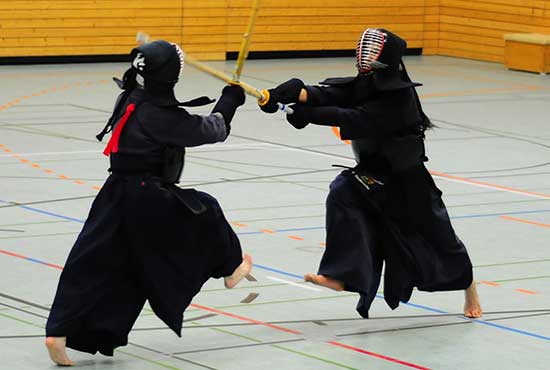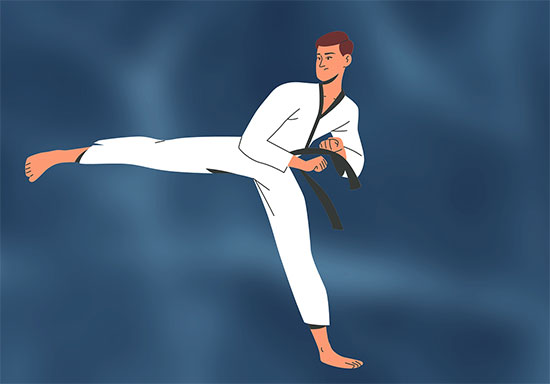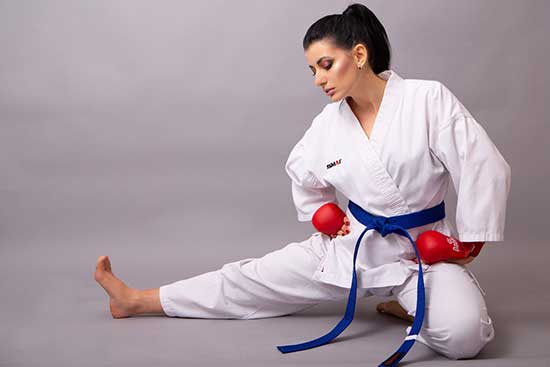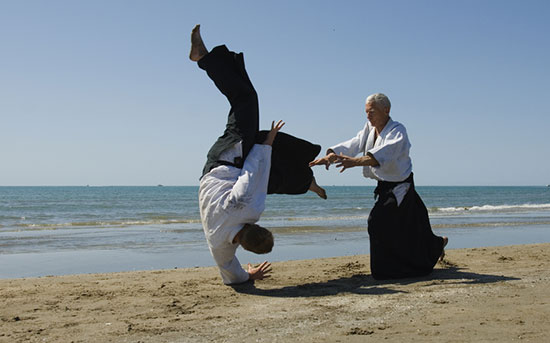Get ready to step into the world of Jeet Kune Do, where the stance is the foundation of your mastery.
From footwork techniques to defense strategies, we will equip you with the knowledge and skills to apply the Jeet Kune Do stance in combat.
Contents
Key Takeaways
- The stance in Jeet Kune Do means balance, mobility, and stability with feet shoulder-width apart, knees slightly bent, and weight evenly distributed.
- Hand position and defense strategies in Jeet Kune Do involve a lead hand positioned in front of the body and a rear hand near the chin for protection, as well as parrying, blocking, and evading techniques.
- The concept of balance and centerline theory is crucial in Jeet Kune Do, focusing on controlling the imaginary line through the opponent’s body, maintaining proper weight distribution, and utilizing footwork for balance and angle changes.
Understanding the Basic Stance
As you delve into the origins of Jeet Kune Do, it’s important to understand the basic stance fundamental to this dynamic martial art. The Jeet Kune Do stance is a crucial element in executing techniques effectively and efficiently. Here are some key points to grasp about the basic stance:
- Feet shoulder-width apart: This provides a stable base for balance and mobility.
- Knees slightly bent: It allows for quick changes in direction and powerful strikes.
- Weight evenly distributed: This ensures stability and the ability to transfer power.
- Center of gravity lowered: It enhances stability and enables swift movements.
- Hands up in a relaxed guard position: This allows for quick defensive and offensive actions.
Mastering the Jeet Kune Do stance is essential for developing a strong foundation in this eclectic martial art. It sets the stage for fluid movement, speed, and power in combat situations.
Key Principles of Jeet Kune Do Stance
Maintain a balanced and agile position with the key principles of the Jeet Kune Do stance.
The first principle is to keep your weight centered and evenly distributed between your feet. This allows for quick movement and ensures stability.
The second principle is to have a relaxed body posture. Tension in your muscles will slow you down, so it’s important to stay loose and flexible.
The third principle is to keep your hands up in a guard position. This protects your head and allows for quick counterattacks.
The fourth principle is to have mobile footwork. You should be able to move in any direction effortlessly, adapting to the situation.
Footwork Techniques in Jeet Kune Do
While maintaining the key principles of the Jeet Kune Do stance, you can enhance your footwork techniques for improved agility and adaptability in combat situations. Here are some essential footwork techniques in Jeet Kune Do:
- Forward Step: This technique involves stepping forward with your lead foot, allowing you to close the distance quickly and launch attacks.
- Lateral Step: A lateral step involves moving sideways, allowing you to evade incoming strikes and create angles for counterattacks.
- Pivoting: Pivoting involves rotating on the balls of your feet, enabling you to change directions swiftly and efficiently.
- Sliding Step: The sliding step is useful for maintaining a constant distance from your opponent while still being able to move in any direction.
- Shuffle Step: This technique involves shifting your weight from one foot to the other, allowing you to quickly transition between offensive and defensive movements.
Hand Position and Defense Strategies
To effectively defend yourself in Jeet Kune Do, you must focus on proper hand position and implement strategic defense strategies.
Your hand position is crucial in both offense and defense. In Jeet Kune Do, the lead hand is positioned in front of your body, with the elbow slightly bent and the hand relaxed. The rear hand is positioned near your chin to protect your face. This hand position allows for quick and powerful strikes while maintaining a solid defensive stance.
Additionally, you must employ effective defense strategies such as parrying, blocking, and evading. Parrying involves redirecting your opponent’s strikes to create openings. Blocking requires using your arms to shield against attacks. Evading involves using footwork and body movement to avoid incoming strikes.
Mastering Balance and Centerline Theory
To achieve mastery in Jeet Kune Do, it’s essential to focus on mastering balance and centerline theory, as these principles build upon the foundation of proper hand position and defense strategies. By understanding and applying these concepts, you’ll be able to maximize your speed, power, and efficiency in combat.
Here are five key points to keep in mind:
- Balance is crucial in Jeet Kune Do. It allows you to maintain stability and mobility while executing techniques.
- Centerline theory emphasizes the importance of controlling the centerline, which is the imaginary line running through your opponent’s body. By controlling this line, you can dominate the fight.
- Proper weight distribution is essential for maintaining balance and generating power in your strikes.
- Footwork plays a vital role in Jeet Kune Do. It enables you to move quickly, change angles, and maintain balance during attacks and defenses.
- Developing a strong core is necessary for maintaining stability and generating power in your techniques.
Applying Jeet Kune Do Stance in Combat
Now, let’s focus on how you can apply the Jeet Kune Do stance effectively in combat to gain an advantage over your opponent.
The Jeet Kune Do stance is a fundamental aspect of this martial art, emphasizing mobility, balance, and adaptability. To apply it effectively, you must maintain a relaxed yet alert posture, with your weight evenly distributed and your knees slightly bent.
This stance allows you to move quickly and efficiently, delivering powerful strikes while maintaining stability. By using the Jeet Kune Do stance, you can effectively control the distance between you and your opponent, making it easier to evade attacks and launch counterattacks.
It also enables you to generate maximum power in your strikes, utilizing the entire body’s kinetic chain. Overall, mastering the Jeet Kune Do stance is crucial for achieving success in combat situations.
Tips for Improving Your Jeet Kune Do Stance
To improve your Jeet Kune Do stance, focus on maintaining a relaxed yet alert posture with your weight evenly distributed and your knees slightly bent. Here are some tips to help you improve your stance:
- Keep your back straight and your chin slightly tucked in to maintain good alignment and balance.
- Relax your shoulders and keep them down, avoiding tension in your upper body.
- Engage your core muscles to provide stability and support to your stance.
- Keep your feet shoulder-width apart, with your toes pointing slightly outward for better mobility.
- Shift your weight smoothly and effortlessly, allowing for quick changes in direction.
Conclusion
As you conclude your journey into the world of Jeet Kune Do stance, you find yourself standing tall, embodying the principles of this martial art.
With a solid foundation, nimble footwork, and precise hand positioning, you’re ready to take on any combat situation.
Your balance and centerline theory allow you to flow effortlessly, like a graceful dancer, while maintaining a fierce defense.
With continued practice and dedication, you’ll enhance your Jeet Kune Do stance, becoming a formidable force in the world of martial arts.





